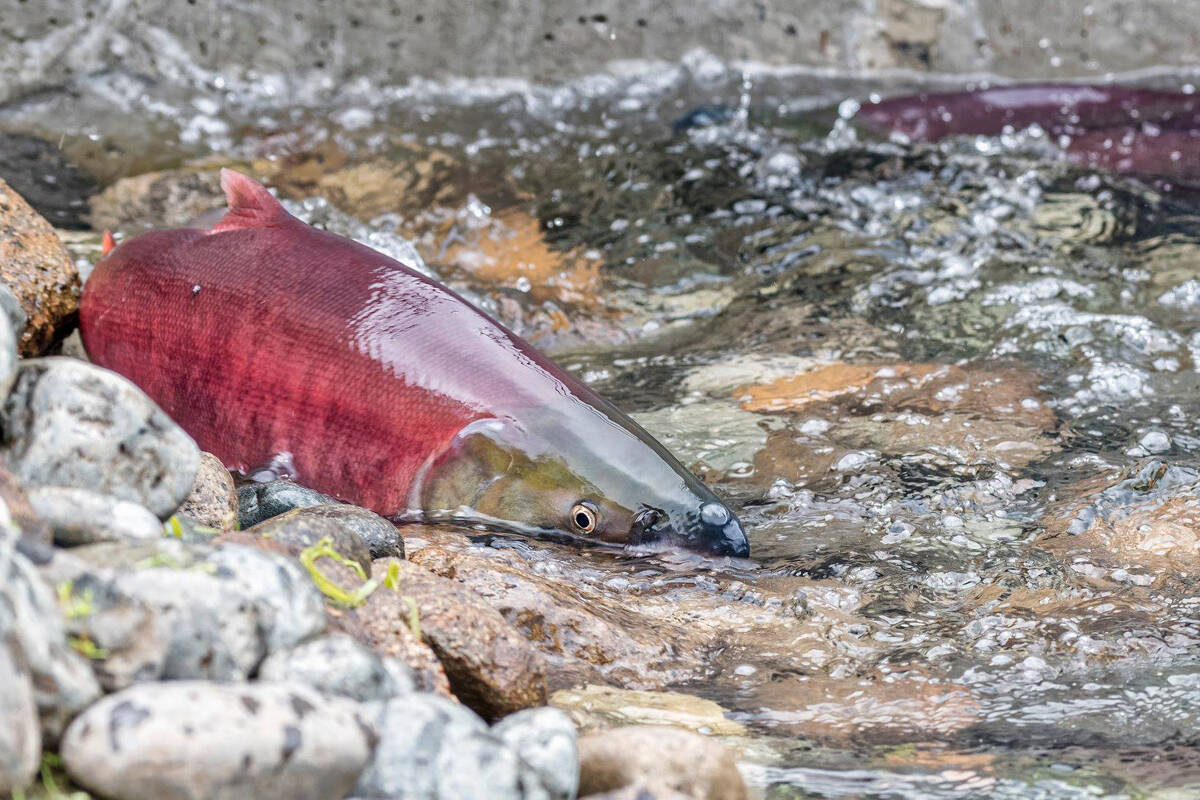The Alaska Department of Fish and Game is predicting a more plentiful sockeye salmon run in Cook Inlet this year compared to last, though the prediction still falls below the 20-year average.
The department forecasted a total run of about 4.97 million sockeye in 2022, combined from the Kenai, Kasilof and Susitna rivers, as well as Fish Creek and an unmonitored area. Comparatively, the 20-year average sockeye run is almost 6.02 million fish in Cook Inlet.
Bob DeCino, the Upper Cook Inlet research biologist who conducted the forecast, said last year’s return yielded 26% more of a sockeye return than originally anticipated.
“The preseason forecast is a little better than last year’s preseason forecast, but last year’s preseason forecasts underestimated what was coming back,” DeCino said.
For the Kenai River in particular, DeCino said, the margin of error in forecasted return was even larger than in all of the Cook Inlet, at 39%.
The projection process involves analyzing previous sockeye returns and different facets of the species’ makeup. This includes the brood year, or year the adults spawn, how many sockeye are in both the recently hatched fry stage and juvenile smolt stage, and the amount of sibling returns.
The sockeye return in the Kenai River is predicted to be just over 2.9 million fish, down from the 20-year average of about 3.7 million. In the Kasilof, there are 941,000 sockeye forecasted, slightly under the 20-year average of 992,000. Just 310,000 sockeye are predicted to run through the Susitna River, down from the 10-year average of 365,000. In Fish Creek 89,000 sockeye are predicted to run, which is slightly higher than the 20-year average of 86,000 fish.
Escapement goals are established on a three-tier system depending on the run prediction, DeCino said.
According to the Cook Inlet sockeye forecast, the Kenai River in-river escapement goal is between 1.1 million and 1.4 million fish based on the preseason forecast of 2.9 million fish which falls within the middle tier of the UCI sockeye salmon management plan. The biological escapement goal in the Kasilof River is between 140,000 and 320,000 sockeye. The sustainable escapement goal for Fish Creek is between 15,000 and 45,000 sockeye.
The Susitna River salmon escapement goals are determined by the escapement goals at the Larson, Chelatna and Judd lakes weirs.
The escapement goal at Larson Lake is between 15,000 and 35,000 fish, between 20,000 to 45,000 in Chelatna Lake, and between 15,000 and 40,000 fish in Judd Lake.
Reach reporter Camille Botello at camille.botello@peninsulaclarion.com.

